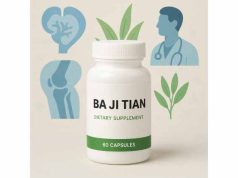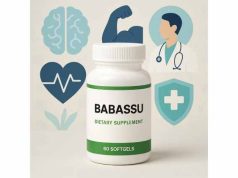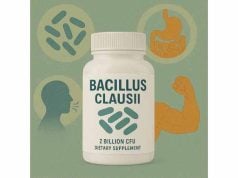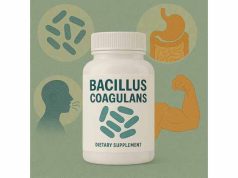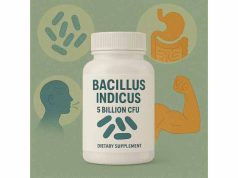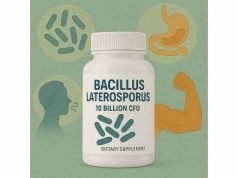
Buckhorn Plantain (Plantago lanceolata), also called ribwort or narrowleaf plantain, is a resilient wild herb found across Europe, North America, and Asia. Known for its slender, ribbed leaves and humble appearance, this plant has a long history in traditional herbalism for soothing respiratory issues, promoting wound healing, and calming digestive discomfort. Modern research supports many of these uses, highlighting its anti-inflammatory, antimicrobial, and antioxidant compounds. As interest in natural wellness grows, Buckhorn Plantain stands out for its gentle, versatile benefits and remarkable safety profile. This article offers a thorough, evidence-based guide to its properties, mechanisms, practical applications, and precautions—helping you confidently explore what this modest yet powerful herb can offer.
Key Takeaways
- Soothes coughs and respiratory irritation: Buckhorn Plantain’s mucilage helps calm dry, tickling coughs and sore throats.
- Promotes wound healing and skin repair: Used topically, it can aid recovery from cuts, scrapes, and minor burns.
- Supports digestive comfort: Traditionally used for gastritis, heartburn, and gentle digestive relief.
- Safe and well-tolerated: Suitable for most ages when used appropriately; very few reported side effects.
- Rich in bioactive plant compounds: Contains antioxidants, anti-inflammatories, and natural antimicrobial agents.
Table of Contents
- Buckhorn Plantain Explained: Identity, History, and Core Properties
- Science Behind Buckhorn Plantain: How Its Natural Compounds Work
- Evidence-Based Benefits and Therapeutic Uses of Buckhorn Plantain
- Buckhorn Plantain Safety, Tolerability, and Potential Side Effects
- Buckhorn Plantain Dosage: Forms, Usage, and Preparation Guide
- Frequently Asked Questions About Buckhorn Plantain
Buckhorn Plantain Explained: Identity, History, and Core Properties
Buckhorn Plantain (Plantago lanceolata) is a perennial herbaceous plant, easily identified by its long, narrow, lance-shaped leaves marked with prominent parallel veins or “ribs.” Despite being considered a common weed in many lawns and fields, it is a respected medicinal herb in European, Native American, and Asian healing traditions.
Botanical Identity and Description
Buckhorn Plantain is part of the Plantaginaceae family, related to the broader Plantago genus which includes the better-known broadleaf plantain (Plantago major) and psyllium (Plantago ovata). The plant’s upright flowering spikes, small greenish flowers, and distinctive ribbed foliage set it apart in the wild. Its adaptability means you’ll find it thriving in lawns, along roadsides, and in meadows across much of the temperate world.
Traditional and Historical Uses
For centuries, Buckhorn Plantain has been a staple in folk medicine for a wide variety of everyday ailments. Some of the most notable historical uses include:
- Wound care: Fresh leaves were used as natural bandages or poultices to draw out infection, reduce swelling, and speed healing.
- Respiratory relief: Teas and syrups from the leaves were given for coughs, bronchitis, and sore throats, valued for their soothing and anti-inflammatory qualities.
- Digestive comfort: The mucilaginous (gel-like) quality of the plant’s leaves makes them excellent for calming heartburn, mild gastritis, and digestive upsets.
- Insect bites and stings: Crushed leaves applied to the skin helped reduce itch, swelling, and irritation from insect bites.
Phytochemical Profile
The therapeutic power of Buckhorn Plantain is rooted in its complex phytochemistry:
- Mucilage: A slippery, soothing fiber that coats and protects mucous membranes in the throat and gut.
- Iridoid glycosides (notably aucubin): Potent anti-inflammatories and antimicrobials that help defend against infection and promote tissue repair.
- Flavonoids: Natural antioxidants that help neutralize free radicals and reduce inflammation throughout the body.
- Tannins: Astringent compounds that support wound healing and help tighten and tone tissues.
- Vitamins and minerals: Including vitamin C, vitamin K, and trace minerals beneficial for skin health and immune function.
Modern Interest and Applications
As more people seek out natural, gentle remedies for common health challenges, Buckhorn Plantain has earned renewed interest in herbal teas, topical salves, cough syrups, and even dietary supplements. Its widespread availability, coupled with an outstanding safety record, makes it a go-to herb for families, herbalists, and natural health practitioners alike.
Summary
Buckhorn Plantain is more than just a weed; it’s a time-tested herbal ally with a diverse range of traditional uses. Its unique blend of mucilage, antioxidants, and anti-inflammatory compounds have kept it relevant from ancient folk medicine right through to modern natural wellness trends.
Science Behind Buckhorn Plantain: How Its Natural Compounds Work
Understanding the biological mechanisms that make Buckhorn Plantain effective allows us to appreciate its broad therapeutic value. Modern research has helped clarify how the plant’s constituents interact with the human body to deliver soothing, protective, and restorative effects.
Key Bioactive Compounds and Their Effects
- Mucilage:
Mucilage is a plant-based, gel-like substance that coats and protects mucous membranes. When Buckhorn Plantain leaves are consumed (for example, as tea or syrup), mucilage lines the throat, esophagus, and stomach, creating a protective barrier. This action explains why Buckhorn Plantain is so effective for soothing coughs, sore throats, and gastrointestinal irritation. - Iridoid Glycosides (Aucubin):
These unique plant compounds are notable for their antimicrobial, anti-inflammatory, and hepatoprotective (liver-protecting) properties. Aucubin, in particular, has been shown to inhibit the growth of certain bacteria and support the body’s natural response to injury or infection. This helps explain the traditional use of Buckhorn Plantain on wounds and in treating minor infections. - Flavonoids:
Buckhorn Plantain is rich in flavonoids such as luteolin and apigenin, which have strong antioxidant effects. These compounds help combat oxidative stress, protecting cells from damage and potentially supporting long-term wellness, especially in inflammatory or immune-mediated conditions. - Tannins:
Tannins act as natural astringents—tightening tissues, reducing minor bleeding, and supporting the healing process. This makes Buckhorn Plantain particularly helpful in wound care and for minor bleeding gums or oral irritations. - Polysaccharides:
In addition to mucilage, the plant contains various polysaccharides (complex sugars) that may have immune-modulating properties—supporting the body’s defenses against infection and promoting balance in the immune response.
How Buckhorn Plantain Acts in the Body
- Anti-inflammatory:
Reduces inflammation both topically and internally by blocking pro-inflammatory cytokines and supporting tissue repair. - Antimicrobial:
Inhibits the growth of a range of bacteria and fungi, aiding the body in warding off infection. - Antioxidant:
Neutralizes free radicals, reducing cellular stress and supporting resilience against chronic disease. - Demulcent:
Soothes and protects irritated tissues, especially mucous membranes in the respiratory and digestive tract. - Astringent:
Tightens tissues, reducing minor bleeding and supporting faster wound closure.
Synergistic Effects
The unique combination of these compounds allows Buckhorn Plantain to provide multifaceted support for respiratory, digestive, and skin health. Its effects are often gentle and cumulative, making it ideal for mild-to-moderate symptoms and long-term wellness.
Safety of Bioactive Compounds
Most research indicates that Buckhorn Plantain’s key constituents are very safe, with extremely low toxicity. Unlike some potent herbs, it does not contain alkaloids or other compounds known to cause adverse reactions in typical doses.
Summary
Buckhorn Plantain works through a blend of soothing, protective, anti-inflammatory, and antimicrobial actions—backed by a unique profile of mucilage, iridoids, flavonoids, and tannins. Its mechanism of action explains why this modest wild herb is valued across cultures and healing traditions.
Evidence-Based Benefits and Therapeutic Uses of Buckhorn Plantain
Buckhorn Plantain’s reputation as a gentle healer is supported by both traditional wisdom and modern research. Its wide range of uses makes it a versatile herbal ally for families, herbalists, and anyone looking to support their health with natural remedies.
1. Respiratory Relief: Coughs, Throat Irritation, and Bronchitis
- Dry, tickling coughs: The demulcent mucilage in Buckhorn Plantain calms dry, hacking coughs by coating the throat, reducing the urge to cough, and easing soreness.
- Sore throats and laryngitis: Herbal teas and syrups soothe irritation, making this herb popular for teachers, singers, and anyone prone to hoarseness.
- Bronchitis and chest congestion: Its anti-inflammatory and mild expectorant effects help relieve mild bronchial irritation and support easier breathing.
2. Skin Healing: Cuts, Burns, Stings, and Minor Infections
- First aid for wounds: Fresh Buckhorn Plantain leaves applied to cuts, scrapes, or minor burns draw out debris, reduce inflammation, and speed tissue repair.
- Insect bites and stings: Crushed leaves ease itching and swelling, and may help reduce the risk of local infection.
- Acne and rashes: The antimicrobial and soothing properties make it useful as a gentle wash for minor skin issues.
3. Digestive Wellness and Gut Soothing
- Gastritis and heartburn: The mucilage creates a calming barrier, relieving burning or irritation in the stomach lining.
- Mild diarrhea: The astringent tannins help tighten loose bowels and reduce mild gastrointestinal upset.
- Support for gut healing: Used in blends for leaky gut or post-antibiotic gut recovery, as part of a holistic digestive protocol.
4. Oral and Dental Health
- Mouth sores and gum bleeding: Plantain mouthwashes or poultices reduce irritation, promote healing, and help control minor oral bleeding.
- Sore gums from braces or dental work: Its gentle, soothing action makes it suitable for sensitive mouths.
5. Allergies and Immune Support
- Hay fever and allergic rhinitis: The anti-inflammatory and astringent properties can help reduce nasal swelling and irritation.
- Immune resilience: Regular use may help support the body’s natural defense mechanisms against respiratory and environmental challenges.
6. Urinary and Reproductive Health
- Mild urinary tract support: The soothing, anti-inflammatory effects can help relieve minor discomfort in the bladder or urethra, especially when used as a tea.
Who Can Benefit Most from Buckhorn Plantain?
- Families seeking a gentle, safe herb for common first aid and respiratory support
- Individuals with sensitive digestive tracts or a history of gastritis
- Those interested in natural oral and skin care solutions
Practical Application Tips
- Teas: For internal support—coughs, gut, or urinary health.
- Topical poultices or salves: For skin issues or wound care.
- Syrups: Especially for soothing coughs and children’s respiratory relief.
Summary
Buckhorn Plantain is a remarkably versatile herb, offering proven benefits for the respiratory tract, skin, gut, mouth, and beyond. Its gentle yet effective action makes it a trusted staple in herbal home care kits around the world.
Buckhorn Plantain Safety, Tolerability, and Potential Side Effects
Buckhorn Plantain (Plantago lanceolata) is one of the safest herbs available for both adults and children when used responsibly and in typical doses. Its broad historical use as both a food and a remedy highlights a remarkable track record for tolerability. However, like all botanicals, awareness of its potential risks, side effects, and interactions is essential for safe and effective use.
General Safety Profile
- Low toxicity: Buckhorn Plantain is not known to contain any toxic alkaloids or compounds harmful to humans at normal doses.
- Edible and safe for most: Both the fresh leaves and prepared teas or syrups are generally safe, even for children and the elderly.
- Wide margin of safety: Accidental consumption of moderate to large quantities (such as from salads) rarely causes problems.
Common and Mild Side Effects
For the majority of users, Buckhorn Plantain does not cause side effects. When they do occur, they are almost always mild and transient:
- Mild digestive upset: Rarely, very large doses (especially as concentrated extracts) may lead to loose stools or mild stomach discomfort due to the mucilage.
- Allergic reactions: Extremely rare, but people with known allergies to other Plantago species or members of the Plantaginaceae family should exercise caution. Symptoms could include itching, rash, or swelling of the lips and tongue.
Rare and Serious Reactions
- Contamination concerns: When wild-harvested from areas treated with pesticides or polluted with heavy metals, the safety of Buckhorn Plantain could be compromised. Always use herbs from trusted, organic sources.
- Interactions with medications: Although extremely uncommon, the herb’s mild astringency and fiber content may affect the absorption of certain medications, especially those requiring careful blood levels (such as thyroid drugs, lithium, or digoxin).
Special Populations
- Pregnancy and breastfeeding: Buckhorn Plantain has a long history of safe use in these populations, but it is always wise to consult a healthcare professional before starting any new supplement during pregnancy or lactation.
- Infants and children: Suitable in age-appropriate doses for minor skin issues, coughs, and digestive upsets. Teas and syrups are popular for children’s coughs; topical poultices are often used for scrapes or insect bites.
Potential Drug Interactions
While clinically significant interactions are rare, a few practical guidelines ensure safety:
- Space dosing: If you are taking prescription medications, especially those with a narrow therapeutic window, allow at least 1–2 hours between Buckhorn Plantain and the medication to avoid possible interference with absorption.
- Consult your doctor: If you’re on long-term medication or have a complex health history, check with a healthcare provider before starting regular, high-dose supplementation.
Signs of Sensitivity or Overuse
While very rare, discontinue use and seek advice if you notice:
- Persistent rash, hives, or itching
- Unusual swelling of the mouth or throat
- Ongoing gastrointestinal distress not relieved by reducing dose
Summary
Buckhorn Plantain is one of the safest herbs for a wide variety of users, including children, older adults, and those with sensitive systems. Adhering to quality sourcing, moderate dosing, and listening to your body will help ensure a positive experience with this time-tested plant ally.
Buckhorn Plantain Dosage: Forms, Usage, and Preparation Guide
Buckhorn Plantain’s flexibility as a herbal remedy lies in the variety of ways it can be prepared and consumed. Understanding dosage and form is essential for harnessing its full therapeutic benefit while maintaining safety.
Popular Forms and Preparations
- Herbal Teas and Infusions:
- How to use: The most traditional form—steep 1–2 teaspoons of dried leaves in 1 cup of hot water for 10–15 minutes. Drink up to 3 times daily.
- Best for: Coughs, sore throats, digestive upsets, and as a gentle daily tonic.
- Syrups and Lozenges:
- How to use: Plantain-infused syrups, often blended with honey or glycerin, are especially popular for soothing children’s coughs. Follow dosage on commercial packaging or use 1–2 teaspoons, 2–4 times daily for adults.
- Best for: Persistent dry cough, throat irritation.
- Topical Applications (Poultices, Salves, Creams):
- How to use: Apply crushed fresh leaves directly to wounds, insect bites, or rashes, or use prepared salves. Reapply every few hours as needed.
- Best for: Cuts, scrapes, minor burns, insect bites, or local skin irritation.
- Tinctures and Liquid Extracts:
- How to use: Commercial tinctures are more concentrated; follow manufacturer dosing, typically 1–2 ml in water up to three times daily.
- Best for: Convenience, travel, or when higher potency is desired.
- Capsules/Tablets:
- How to use: Standardized extracts for ease of use; typical dose is 300–600 mg, 1–3 times daily. Always follow label instructions.
- Best for: Consistent dosing, those sensitive to taste.
Guidelines for Effective Use
- Start low, go slow: Especially if you are new to the herb or using it for children, begin with the lowest recommended dose and increase as needed.
- Consistency matters: Regular, moderate use is generally more effective than sporadic large doses, particularly for ongoing cough or gut support.
- Fresh vs. dried: Fresh leaves are excellent for topical use; dried leaves are best for teas, infusions, or capsules.
Age and Health Considerations
- Children: Lower doses are suitable. For teas, use half the adult amount. For syrups, 1/2–1 teaspoon every few hours as needed.
- Older adults: Standard adult dosing is safe, but consult your healthcare provider if you have chronic medical conditions or take multiple medications.
When to Avoid or Adjust Use
- Known allergy to Plantago species
- Unexplained or worsening symptoms: If a wound does not improve within a few days or respiratory symptoms persist or worsen, consult a medical professional.
- Pregnancy/Breastfeeding: Generally considered safe, but best used with professional advice for ongoing or high-dose supplementation.
Quality and Sourcing
- Organic, wildcrafted sources: Ensure plants are harvested from clean, pesticide-free environments.
- Certified supplements: Choose brands with transparent sourcing and third-party testing for potency and purity.
Summary
Buckhorn Plantain’s gentle, effective action is accessible through teas, syrups, topical applications, and capsules. Appropriate dosing, high-quality products, and a thoughtful approach will maximize benefits while minimizing any risk.
Frequently Asked Questions About Buckhorn Plantain
What is Buckhorn Plantain most commonly used for?
Buckhorn Plantain is best known for soothing coughs, supporting wound healing, and relieving mild digestive upset. Its mucilage content makes it a popular natural remedy for dry throats, minor burns, and irritated skin.
Is Buckhorn Plantain safe for children and older adults?
Yes, Buckhorn Plantain is safe for most children and elderly adults when used in appropriate doses. It’s a favorite among herbalists for family wellness due to its gentle action and very low risk of side effects.
Can Buckhorn Plantain help with skin conditions?
Yes, Buckhorn Plantain is traditionally used topically for cuts, scrapes, insect bites, mild rashes, and minor burns. Its antimicrobial and anti-inflammatory properties support faster, cleaner healing.
How should Buckhorn Plantain be taken for coughs or sore throat?
Herbal teas, syrups, or lozenges made from Buckhorn Plantain are commonly used to soothe dry, irritated throats and calm coughs. Dosing depends on the preparation, but teas and syrups are typically taken several times daily.
Are there any side effects or risks with Buckhorn Plantain?
Buckhorn Plantain is very safe and well-tolerated, with side effects being rare and usually mild (occasional digestive upset or rare allergy). Always source from reputable suppliers to avoid contamination.
Can I take Buckhorn Plantain with prescription medication?
In most cases, Buckhorn Plantain does not interact with medications. To be cautious, take it a couple of hours apart from prescriptions and consult your healthcare provider if you take medications requiring strict blood levels.
Is Buckhorn Plantain safe during pregnancy or breastfeeding?
Traditionally, Buckhorn Plantain has been considered safe in moderate amounts during pregnancy and breastfeeding. However, always consult with a healthcare professional before adding any supplement to your regimen during these times.
Disclaimer:
The information presented in this article is for educational and informational purposes only. It should not be taken as medical advice or used as a substitute for consultation with a qualified healthcare professional. Always consult your doctor before beginning any new supplement, especially if you are pregnant, breastfeeding, have medical conditions, or take prescription medications.
If you found this guide helpful, please consider sharing it on Facebook, X (formerly Twitter), or any platform you love. Follow us on social media for more evidence-based wellness insights—your support allows us to keep delivering trustworthy natural health content!

